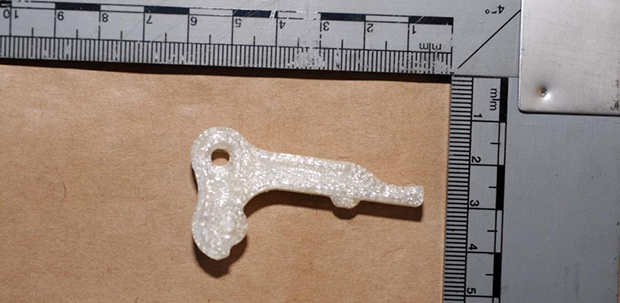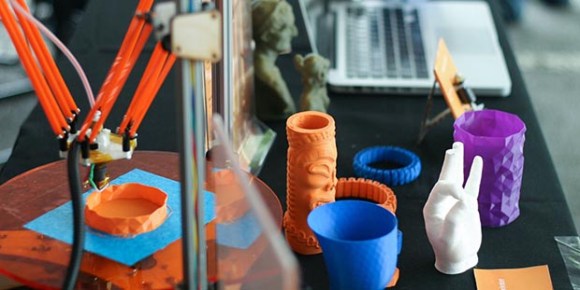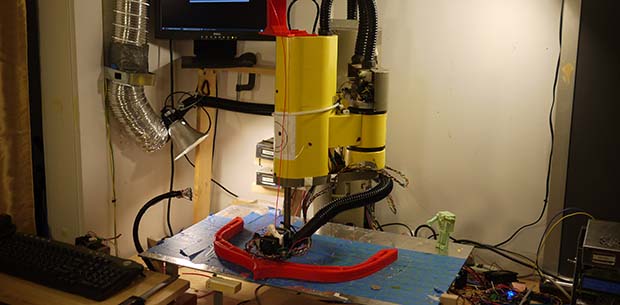
Above, according to the greater Manchester Police force, is a 3D printed gun. Well, the rozzers say it’s merely a trigger for a gun. In part they’re actually correct; it is a trigger. For a spring-loaded extruder for the Makerbot Replicator.
For the past few days, the media has been abuzz about the first seizure of a 3D printer (a Makerbot Replicator 2) in Manchester, UK during a raid on suspected gang members. Despite numerous complaints and comments by makers across the UK (thanks, guys), Assistant Chief Constable [Steve Heywood] says, “We need to be absolutely clear that at that this stage, we cannot categorically say we have recovered the component parts for a 3D gun.” The seized 3D printer parts are being sent to ballistics experts to determine if a random piece of plastic can be used in the manufacture of handguns.
Alright kiddos, editorial time. We’re quite aware that the UK is a little…. different… than the US when it comes to firearms regulation. Nevertheless, we feel the need to defend anyone with a 3D printer, in a handy Q&A format:
What this has also done is open up a wider debate about the emerging threat these next generation of weapons might pose.
No, it doesn’t. I don’t know what the British equivalent of a Home Depot is, but I could go to that store, buy some stuff, and build a zip gun. Of course I wouldn’t, because that’s not safe. I could also use a mill and lathe to make a proper gun.
But it’s made of plastic and thus undetectable
Bullets aren’t. Also, I could machine some Delrin. You should really watch In the Line of Fire.
But plans for 3D printed guns are available, making it easy for anyone to fabricate their own gun
Yeah, and Hackaday made one. There were a lot of problems with those 3D printer files. The spring wouldn’t slice, the hammer wouldn’t print, every part was out of scale, and you’d need a lot of experience in 3D modeling and design to turn those ‘plans available on the Internet’ into something you can send to a printer.
Your posting this article further sensationalizes the role of 3D printers in gun control.
You’re right. Here’s what you do: every time someone mentions 3D printed guns, say, “You can build an even better gun with a combo mill/lathe that costs the same as a 3D printer. Equal skill is required to operate both machines. Do you intend to ban the sale or use of machine tools?”
But UK gun laws are weird.
Then print a knife.
via reddit

















